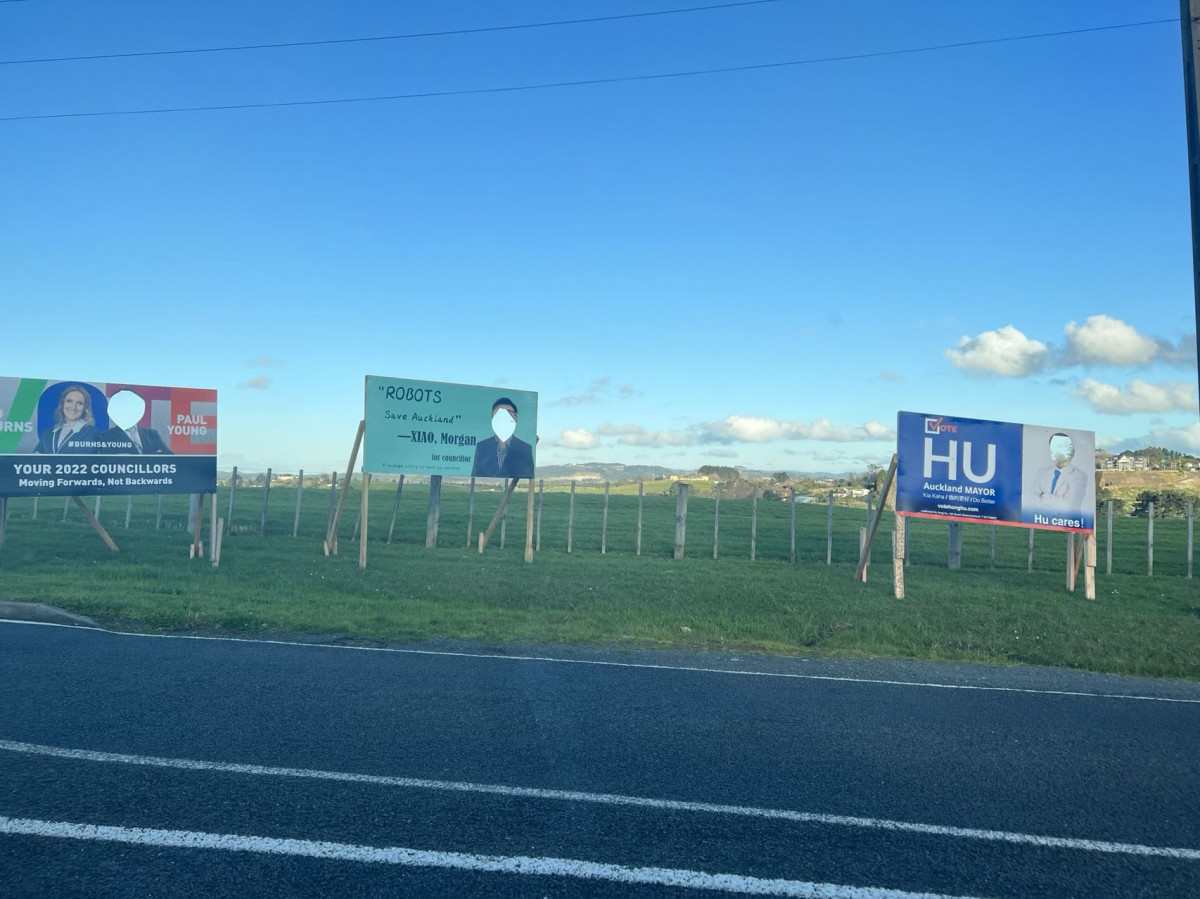Howick ward councillor Paul Young has run in eight local elections and says damage to election signage isn’t a new phenomenon.
But this year the vandalism has been relentless, he says.
“More than 30 of my signs have my head cut out of them. The cutting almost looks professional,” he says.
Today he is waiting for another 20 new signs to be delivered so his team can go out and replace the damaged ones around Auckland.
“It’s not acceptable. No one wants to see that. It’s not just about me, it’s about the democracy of the election and wanting other migrants to feel safe to be a candidate.
“Unfortunately I predicted that this election would be the worst one, it’s the worst election in my life in the last 12 years.”
There have been several reports of election signs being vandalised around the country.
Palmerston North’s Labour candidate signs have also faced repeated attacks, costing thousands of dollars in damage.
Whakatū Māori ward candidate Bernie Goldsmith has had two of her three signs stolen.
Former MP for Pakuranga Maurice Williamson, who is running against Young in the Howick ward, says his face has also been cut out of several signs.
A police spokesperson told Re: News they were “not aware of any increase in reports of this nature”.
Howick mayoral candidate Hong Hu, whose signs have also been targeted, says it’s clear the attacks are racially motivated.
In one spot in Somerville, east Auckland, there were three election signs featuring one European female candidate and three Asian male candidates, including Hu.

Three of the vandalised election signs in Somerville, featuring one European female candidate and three Asian male candidates. Photo: Supplied
“No one touched her. She still looked beautiful but the three Asian men had their faces cut out,” Hu says.
Hu says this damage not only distracts from his campaign but also impacts Asian communities.
“It’s my first time running for mayor because I am confident we can do better. But we continue to receive these attacks.
“I think New Zealand democracy is still immature. They are still not familiar with so-called diversity representation. But the importance of diversity needs to be widely educated otherwise this will happen again and again.”
Young says the damage to his signs will not affect him.
“It will only make me stronger,” he says.
“My parents brought me to New Zealand from Taiwan, my kids were born here and my parents have now been buried here. Tāmaki Makaurau is my home. So I will keep working to move forward, not backward.”
More stories:
Only 25% of Māori spoke te reo in 1960. Now Māori fluency is growing
Almost 8% of New Zealanders can speak te reo at least fairly well, which is up from 6.1% in 2018.
'It feels like a slap in the face': high risk people on dropping mask mandates
How does this decision affect our most vulnerable?
Hot ways to ask for consent in te reo Māori
“He pai tēnā?”